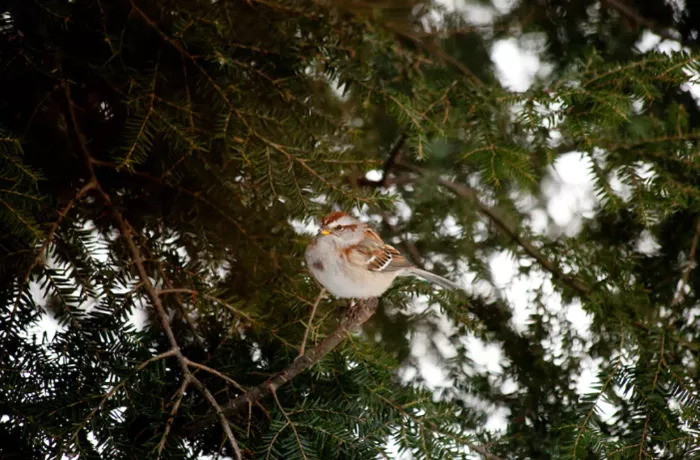As the colder months approach, creating a welcoming environment for birds becomes increasingly important. One effective way to attract more birds to your feeders is by adding cover with native plants. Birds rely on cover to hide from predators, and many species prefer to forage near plants that offer quick escape routes. Providing cover is often overlooked, yet it’s essential for supporting a variety of birds.
Native plants not only offer protective cover but also serve as a food source. They provide fruit, seeds, and host insects that birds can feed on. Some species, like kinglets, warblers, and vireos, typically feed on insects and tend to avoid feeders. However, when they see other birds at your feeder and notice nearby plants, they may be encouraged to forage in the area.
Similar to how common feeder species such as chickadees, nuthatches, and woodpeckers form mixed-species flocks in winter, the presence of these birds can signal to others that your feeder is a good spot for food.
Evergreen plants are particularly valuable for winter cover, as they retain their foliage when deciduous plants lose their leaves. Birds that overwinter in your area often choose to roost in the dense, sheltered foliage of evergreen shrubs and trees. Conifers like Northern White-cedar, Common Juniper, and Canada Yew are excellent choices. These plants not only provide cover but also bear fruits that persist through the winter and support insects that birds can feed on.
Other native evergreen species, such as Inkberry Holly and members of the Blueberry family, also provide useful cover. These plants thrive in wet or shaded areas and are beneficial for both shelter and food. Some plants, like the Winterberry Holly, produce berries that can last into the next growing season if they’re not eaten first. Other native species that offer persistent fruit include bayberries, sumacs, and viburnums. Even native vines, like Virginia Creeper and Poison Ivy, can serve as effective cover and provide food in smaller or vertical spaces.
While fruits and insects are important food sources for birds, many species also rely on seeds. Smaller native trees, such as Speckled Alder and Gray Birch, provide year-round cover and hold their seeds through the winter. Tall plants in the Aster family, like Canada Goldenrod and New England Aster, as well as native grasses such as Eastern Wild-rye and Switch Panicgrass, offer seeds that persist into the colder months.
As autumn sets in and plants begin to wither, now is the perfect time to assess your yard for potential bird cover. There’s still time to plant native species before winter arrives, ensuring that your yard becomes a shelter for birds throughout the seasons to come.
Related topics:


